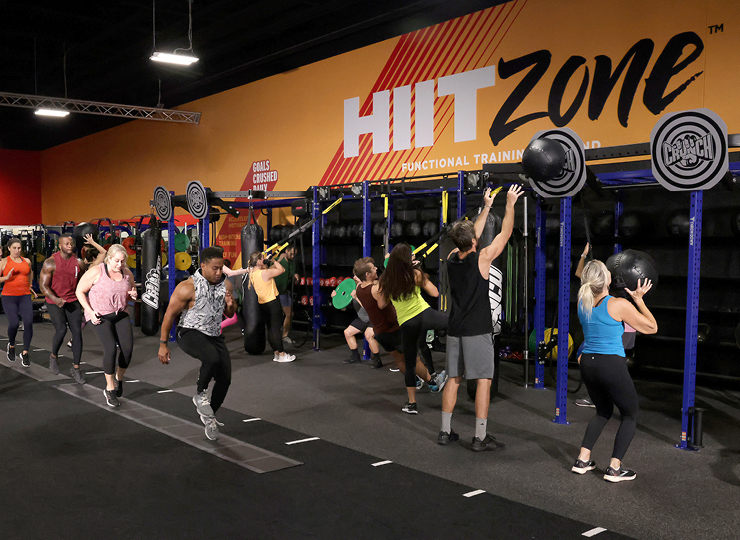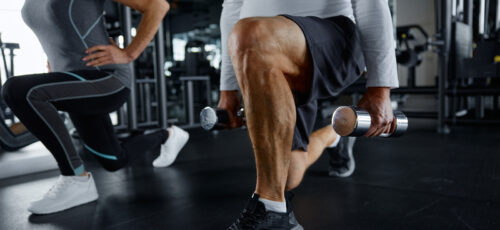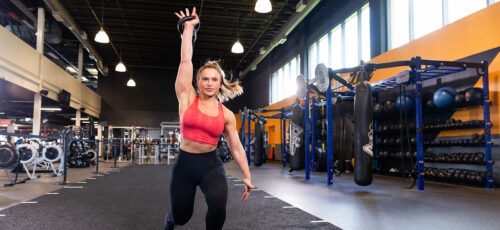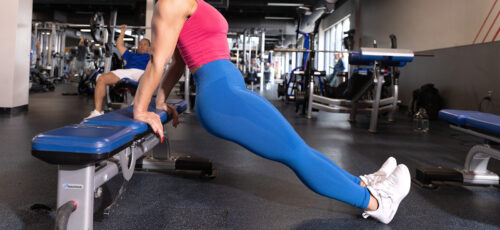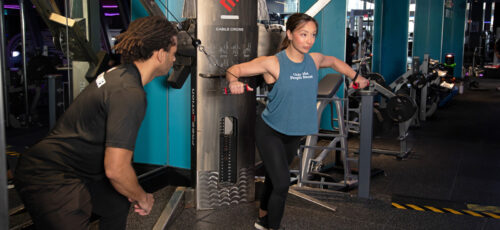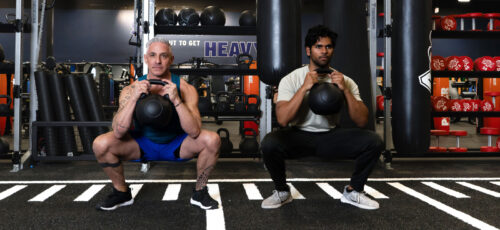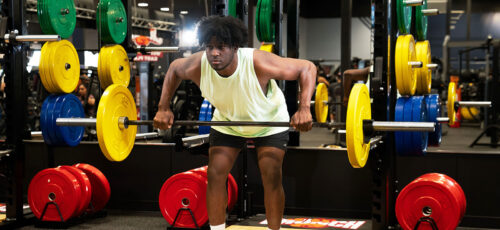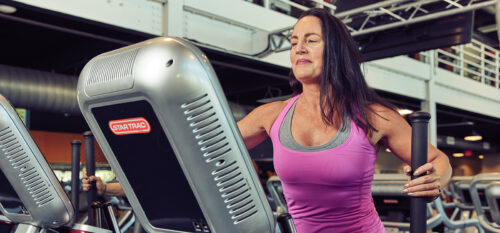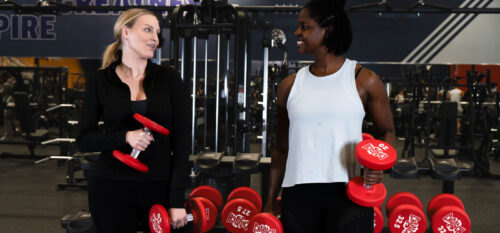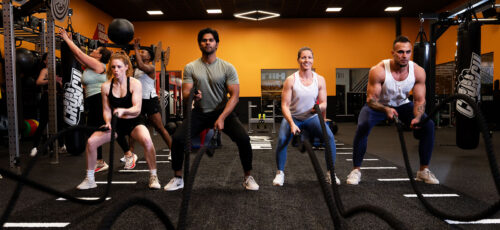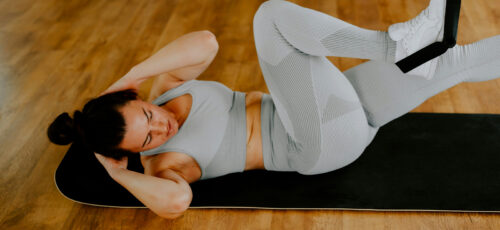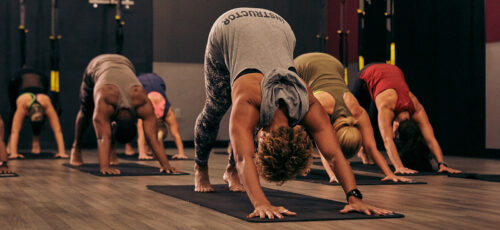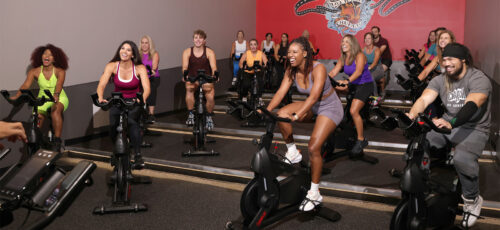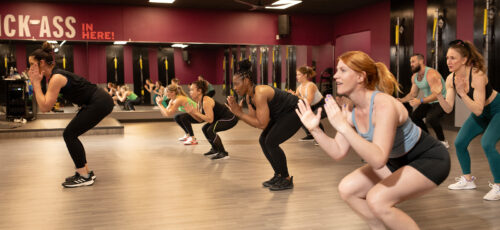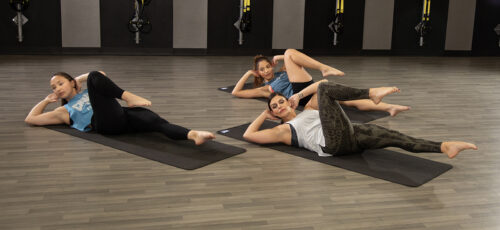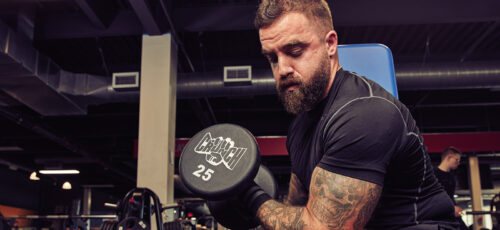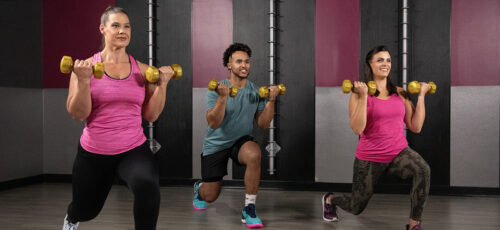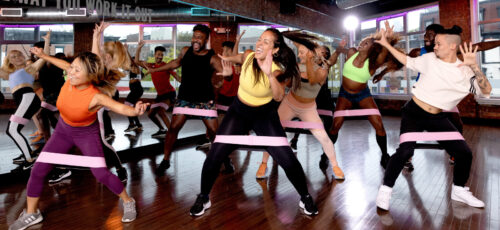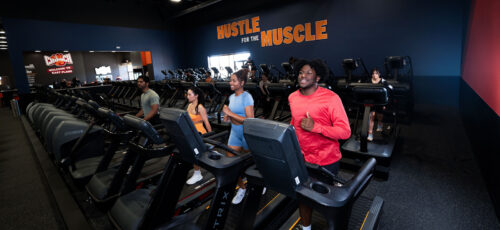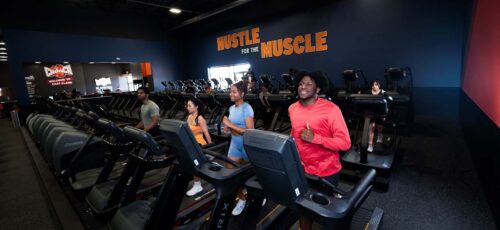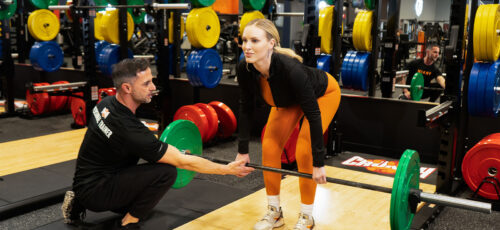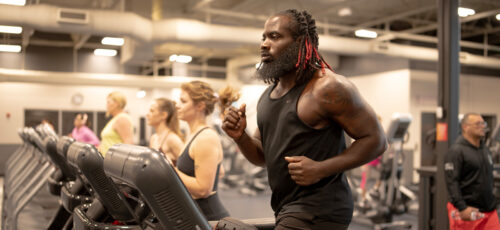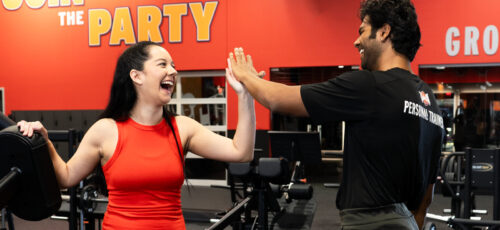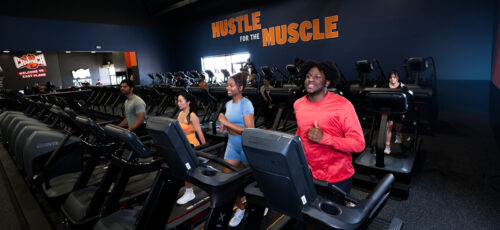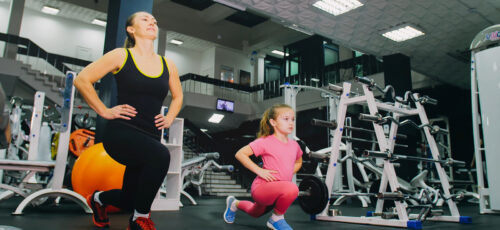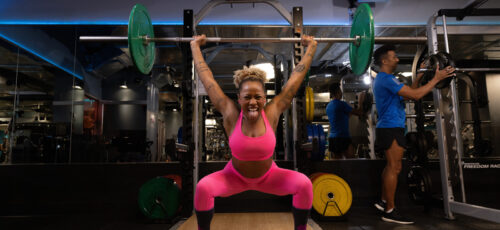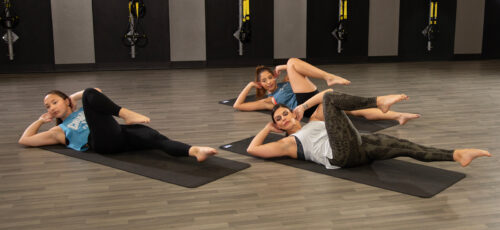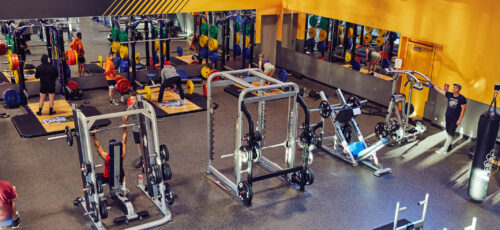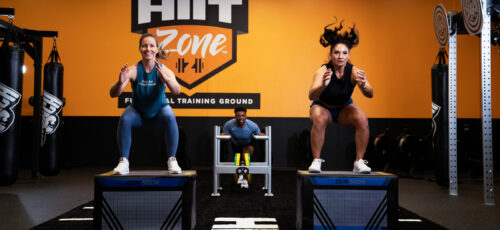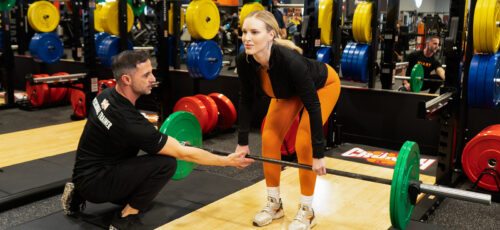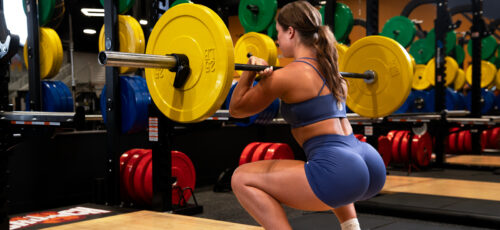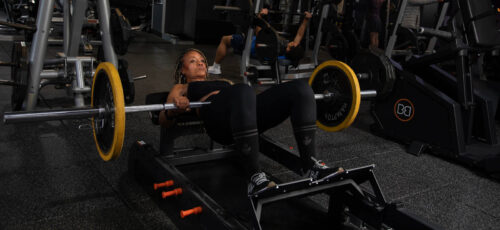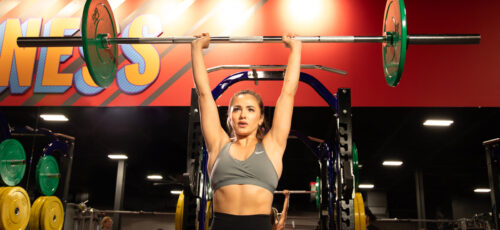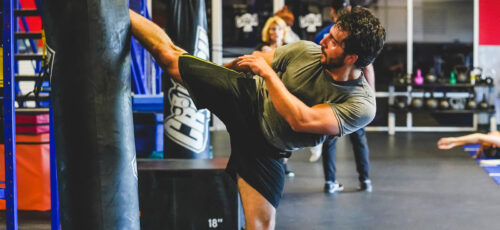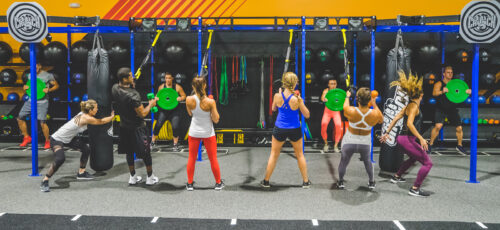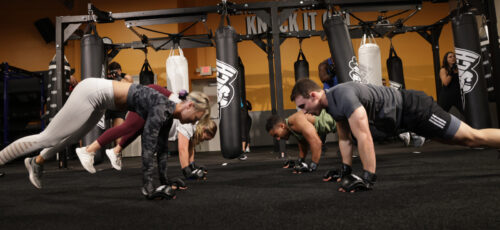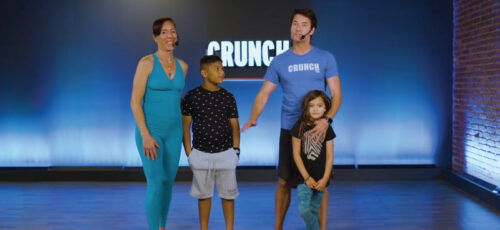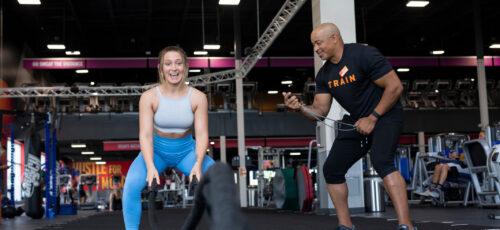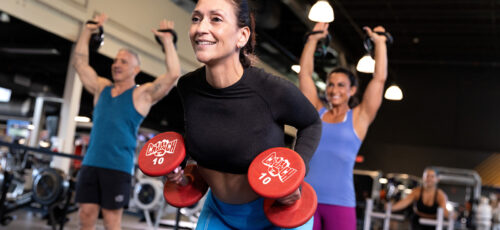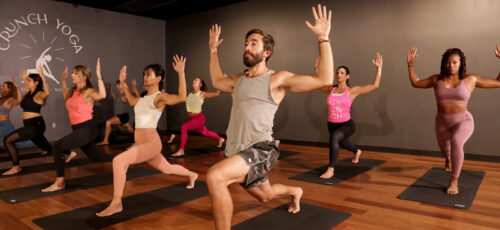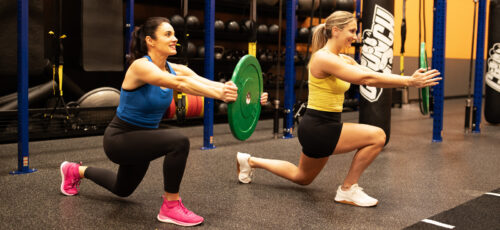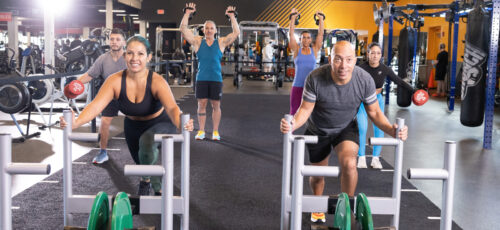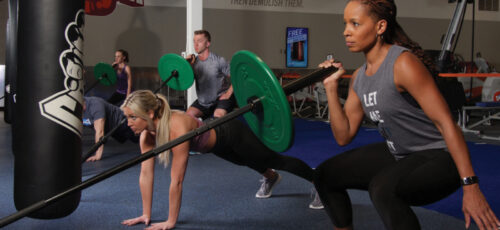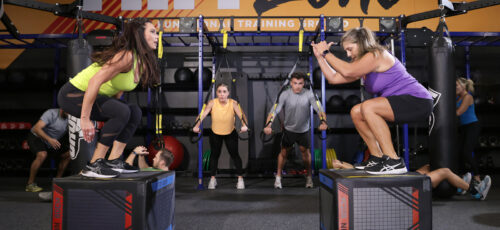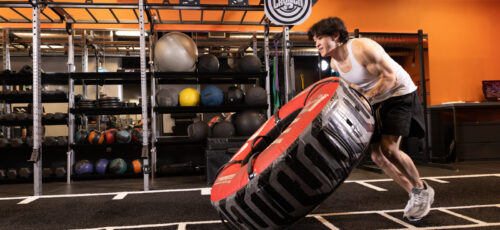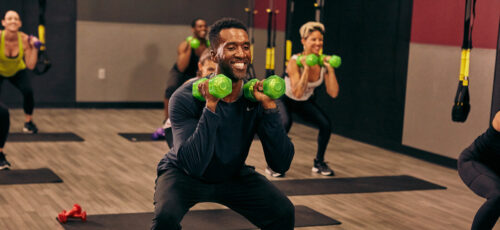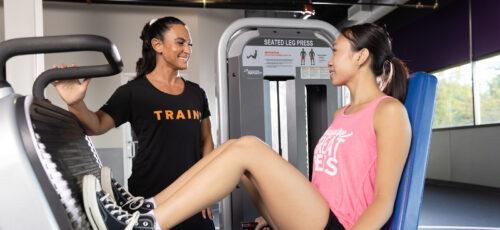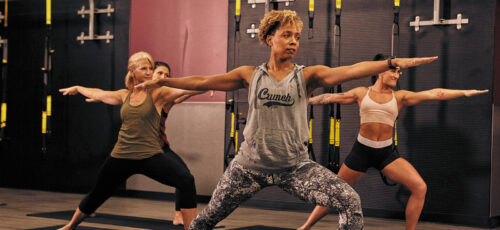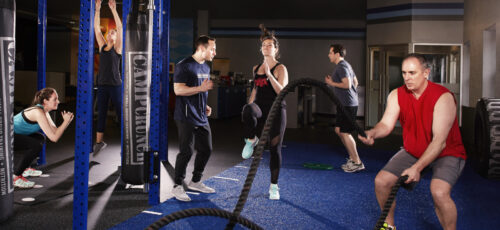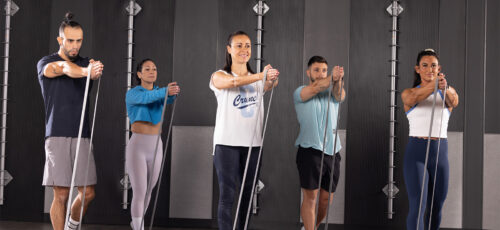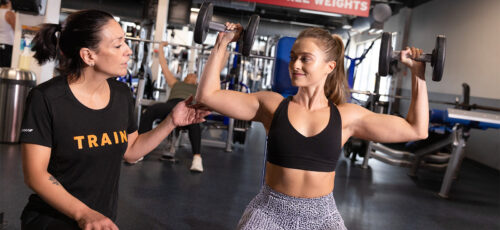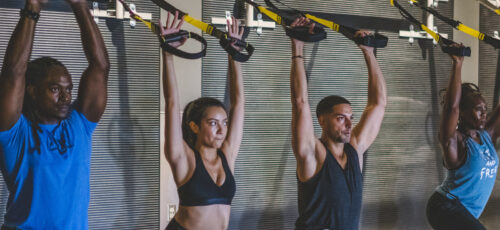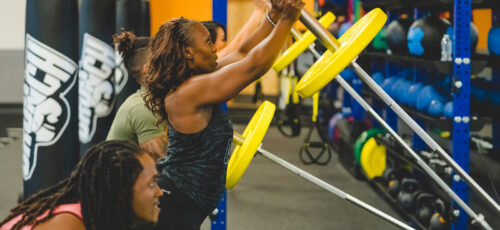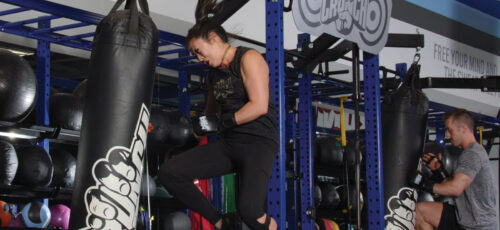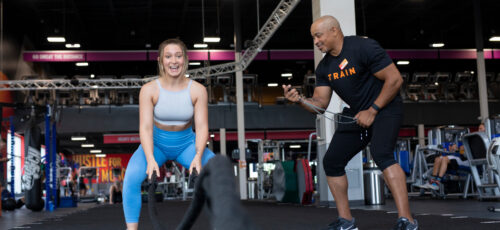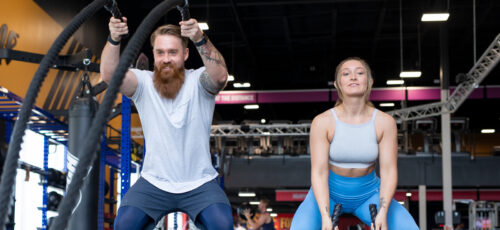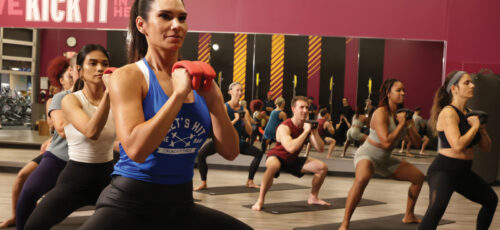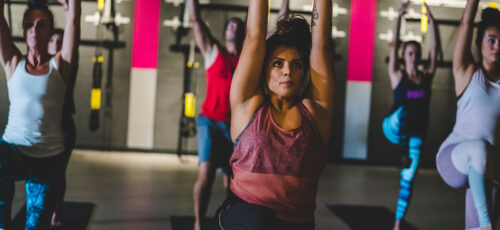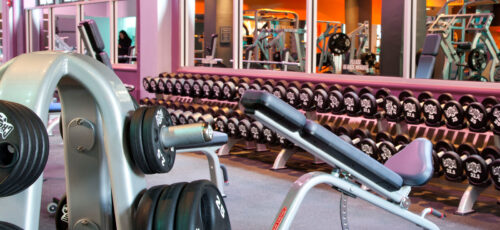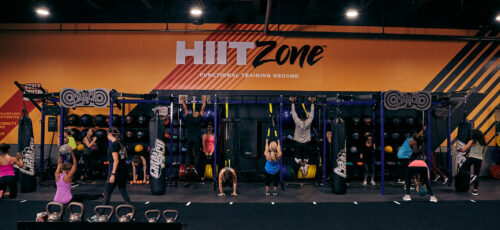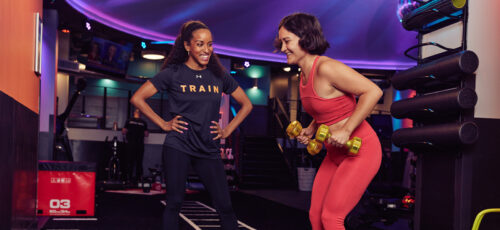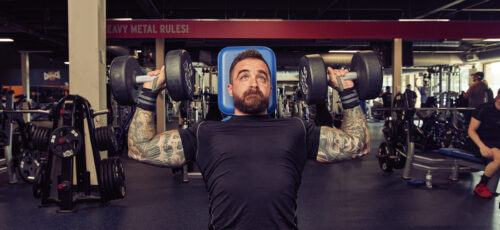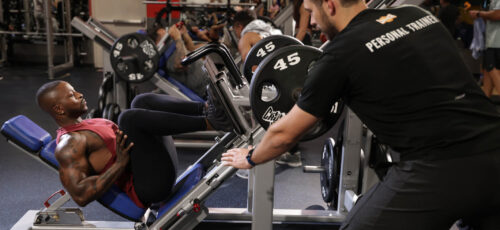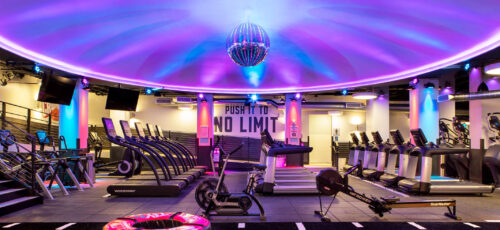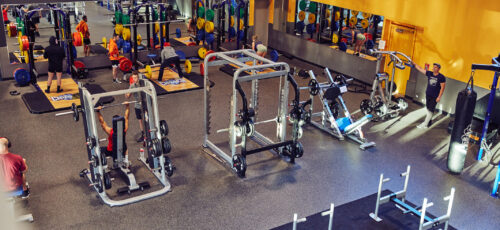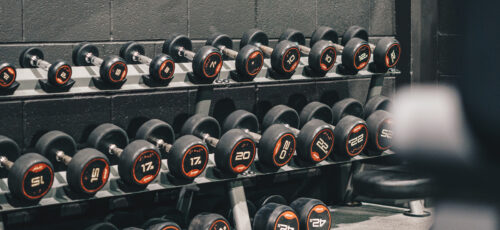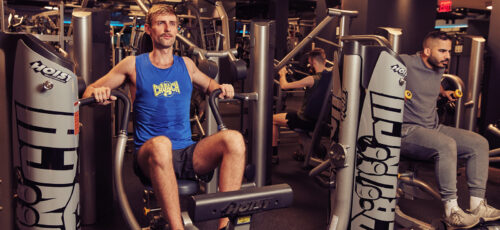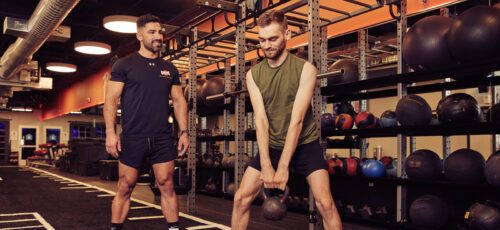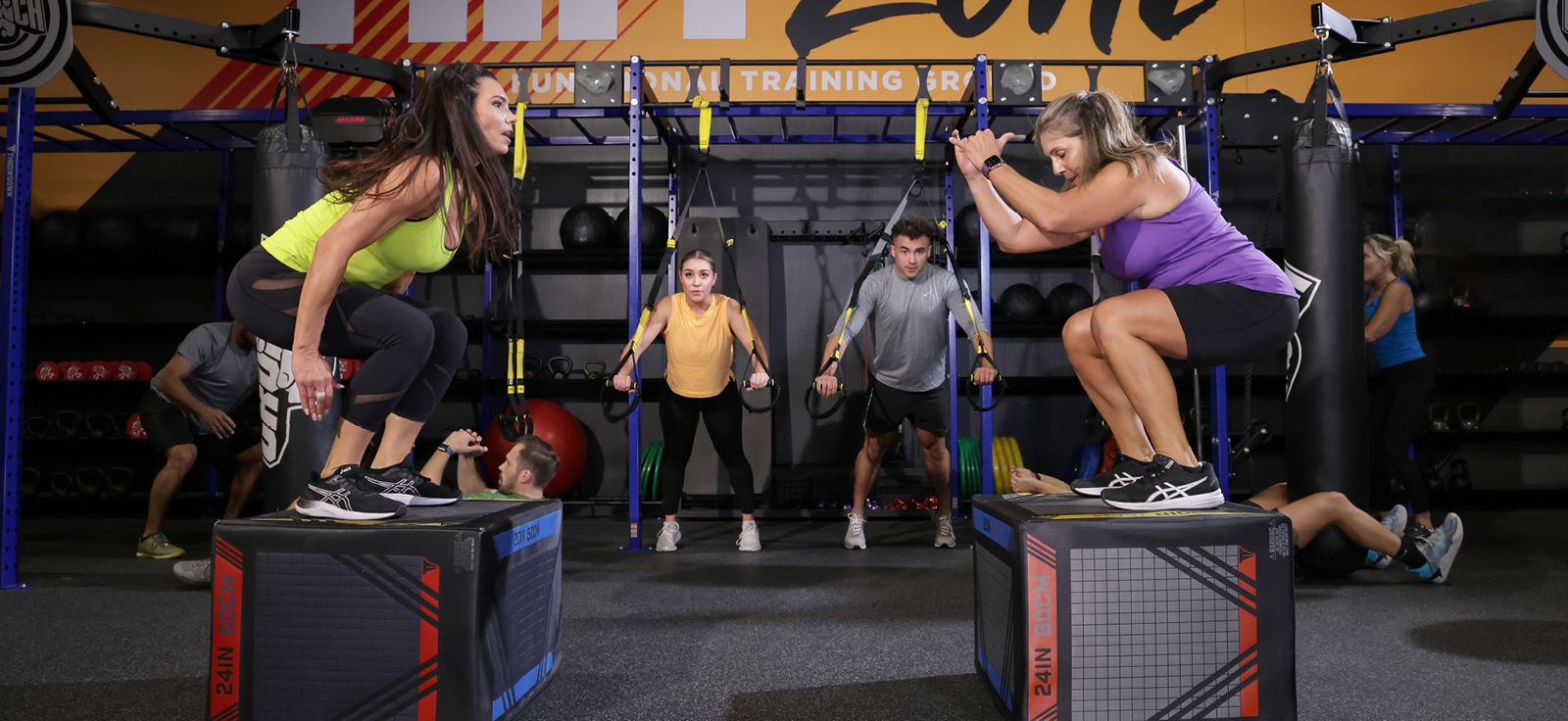
Have you ever found yourself at the gym, wondering whether doing High-Intensity Interval Training after strength training is the most effective way to reach your fitness goal? It’s a common dilemma for gymgoers.
Starting with strength is advantageous as it lets you gain fresh muscles and lift heavier weights. However, there’s an exciting twist to this.
Some studies suggest integrating HIIT after strength training workouts significantly amplifies your routine benefits.
Could this combination of two intense routines be the key to unlocking the best of both worlds in your fitness journey? If you’re seeking a practical guide on structuring your workout for optimal results, you’ve come to the right place.
In this article, we’ll delve into the science behind HIIT after strength training workouts, discuss its benefits, and, most importantly, provide practical tips for effectively integrating these methods into your routine.
Strength Training vs. HIIT Workout
Strength Training exercises
Strength or resistance training is a form of physical activity designed to enhance muscle strength and endurance by requiring the muscles to work against an opposing force.
This opposing force can be provided in various ways, such as using weights like dumbbells and barbells, resistance bands, or simply using your body weight.
The primary objective of strength workouts is to progressively challenge the muscles so that they become stronger and more resilient over time.
By repeatedly performing exercises targeting specific muscle groups, individuals can improve their overall strength and endurance, leading to greater physical fitness and functional ability.
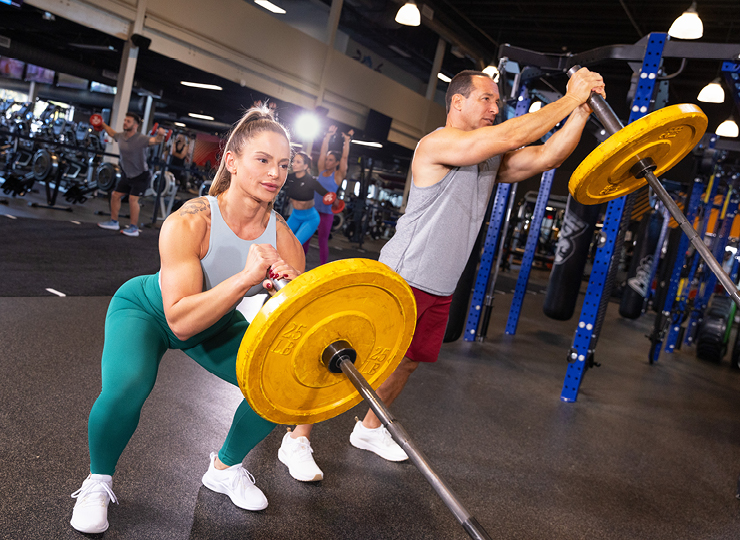
HIIT Workout
High-Intensity Interval Training is a popular cardiovascular exercise approach that involves alternating short bursts of high-intensity exercise with periods of low-intensity recovery or rest.
People can adapt this type of training to various forms of exercise, such as running, cycling, or bodyweight exercises like burpees and jump squats.
HIIT has gained popularity following its benefits, such as calorie-burning efficiency and improved cardiovascular fitness in a shorter period of time compared to steady-state cardio exercises.
HIIT method has been shown to be effective for individuals looking to improve their endurance, burn fat, and enhance overall fitness levels.
Common Fitness Goals
Combining different workouts, such as strength exercises and HIIT, can help achieve many fitness goals.
Each workout type brings unique benefits that can create a well-rounded and effective fitness regimen.
For those looking to build muscle and strength, it is vital to incorporate strength training as the primary focus. Exercises such as squats, deadlifts, bench presses, and rows can help increase muscle mass and overall strength.
If improving cardiovascular fitness is your goal, HIIT workouts, which challenge the cardiovascular system with short bursts of intense exercise, are highly effective.
Integrating HIIT workouts with strength training supports muscular endurance and maintains muscle mass.
Stronger muscles improve overall efficiency in cardiovascular activities, enhancing heart and lung capacity and overall health.
Pros of HIIT After Strength Training
Incorporating high-intensity interval training with strength training in a single session can significantly enhance your fitness results.
Engaging in HIIT after strength offers distinct benefits, including increased calorie burn, improved cardiovascular fitness, and optimized time efficiency.
Let’s explore why this combination works so well:
Enhanced Calorie Burn and EPOC Effect
As we said before, one of the standout benefits of HIIT workouts after strength training is the significant boost in calorie burn.
Strength training exercises primarily focus on building muscle and power, which increases your resting metabolic rate. When you follow this with HIIT, you tap into an additional layer of calorie charge.
HIIT’s intense nature causes your body to burn a high number of calories during the workout and continues to burn at an elevated rate after the session.
The Excess Post-Exercise Oxygen Consumption (EPOC) effect means your body requires more oxygen to return to its resting state, resulting in more calories burned long after exercising.
Both strength training and HIIT maximizes this afterburn effect, making your workout more efficient and promoting weight loss.
Improved Cardiovascular Fitness level
Strength training builds muscle and improves muscular endurance but doesn’t benefit cardiovascular health. That’s where HIIT comes in.
Taking HIIT after your strength session challenges your heart and lungs.
The alternating periods of high-intensity exercise and short rest intervals push your cardiovascular health to adapt and improve, boosting overall fitness.
Furthermore, studies indicate that within 24 hours after a HIIT workout, the body generates 450% more human growth hormone.
This increase promotes the building and preservation of lean muscle mass while also helping to eliminate excess fat.
Time Efficiency
Finding time to work out can be a significant barrier to maintaining a consistent fitness routine for many people.
Incorporating strength training and HIIT into one session is an efficient way to maximize your workout benefits without spending hours in the gym.
HIIT workouts are typically shorter than traditional cardio sessions because their intensity allows you to achieve substantial fitness gains in a brief period.
When you add HIIT to the end of your strength session, you effectively combine two powerful workout styles in a time-efficient manner.
This approach saves time and ensures you get a comprehensive workout that targets multiple aspects of fitness, from muscle strength to cardiovascular health, all in one session.
HIIT Workouts After Strength Sessions: Considerations
While combining HIIT with strength training workouts can offer many benefits, it’s important to be aware of potential drawbacks and considerations to ensure you approach this workout strategy safely and effectively.
Fatigue Factor
- Increased Fatigue: Performing HIIT after strength training exercises can lead to significant fatigue. Strength training alone can be exhausting, and adding an intense HIIT session immediately afterward may deplete your energy levels, making it harder to maintain proper form and intensity throughout the workout.
- Decreased Workout Quality: The mixed physical demand of strength training workouts followed by HIIT can reduce the quality of both activities. You might need more reps during your strength training exercises to lift as heavy or complete as many reps, and your routine during HIIT intervals may suffer due to pre-existing fatigue.
Risk of Overtraining
- Overtraining Syndrome: Pushing your body too hard by combining HIIT and strength training without adequate rest can lead to overtraining. Studies show that overtraining syndrome can cause persistent fatigue, decreased performance, increased risk of injury, and other health issues.
- Insufficient Recovery: With proper rest and recovery, your muscles and cardiovascular health may have enough time to repair and grow stronger.
Performance Impact
- Compromised Strength Gains: If you aim to build muscle and strength, adding HIIT workouts after your strength sessions might compromise your progress. Your body might shift the energy and resources needed for muscle repair and growth to recover from the intense effort of HIIT.
- Reduced Effectiveness of HIIT: If cardiovascular health improvement is your main objective, the preceding strength workout might leave you too tired to perform HIIT at the required intensity, reducing its effectiveness.
Best Practices
To maximize the health benefits and minimize the risks of your workout routine, you must follow best practices regarding the order of your exercises, the appropriate duration and intensity for each, and effective recovery strategies.
Begin your routine with strength workouts while your muscles are fresh. This allows you to lift heavier weights and perform exercises with proper form, maximizing muscle growth and strength gains.
After completing your strength exercises, move on to HIIT workouts. This sequence helps you maintain the intensity needed for both workouts and uses the EPOC effect to enhance and burn calories.
HIIT workouts should be brief but high in intensity. Aim for 15-30 minutes of High-Intensity Interval Training, incorporating exercises that challenge your cardiovascular system and push you to your limits.
Avoid overly long workout sessions since they can lead to excessive fatigue and overtraining.
Combining a 45-60-minute strength workout with a 15-30-minute HIIT workout is typically sufficient.
Schedule regular rest days to allow your muscles and cardiovascular system to recover. This helps prevent overtraining and promotes muscle repair and growth.
Consider engaging in light activities like walking, yoga, or stretching on non-training days.
Active recovery aids in reducing muscle soreness and maintaining flexibility.
Sample Workout Plan
Here’s an example of a balanced workout plan integrating strength workouts and HIIT training based on the American Council on Exercise:
Monday: Upper Body Strength + HIIT
- Strength Training (45 minutes)
- Bench Press: 4 sets of 8-10 reps
- Bent Over Rows: 4 sets of 8-10 reps
- Shoulder Press: 3 sets of 10-12 reps
- Bicep Curls: 3 sets of 12-15 reps
- Tricep Dips: 3 sets of 12-15 reps
- HIIT Exercise(15 minutes)
- 30 seconds of burpees, 30 seconds of rest
- 30 seconds of mountain climbers, 30 seconds rest
- 30 seconds of high knees, 30 seconds of rest
- Repeat for a total of 3 rounds
Tuesday: Lower Body Strength + HIIT
- Strength Training (45 minutes)
- Squats: 4 sets of 8-10 reps
- Deadlifts: 4 sets of 8-10 reps
- Lunges: 3 sets of 10-12 reps per leg
- Leg Press: 3 sets of 12-15 reps
- Calf Raises: 3 sets of 15-20 reps
- HIIT Exercises (15 minutes)
- 30 seconds of jump squats, 30 seconds rest
- 30 seconds of box jumps, 30 seconds rest
- 30 seconds of alternating jump lunges, 30 seconds of rest
- Repeat for a total of 3 rounds
Wednesday: Rest or Active Recovery
- Engage in light activities like walking, yoga, or stretching to promote recovery.
Thursday: Full Body Strength + HIIT
- Strength Training (45 minutes)
- Pull-Ups: 3 sets of 8-10 reps
- Push-Ups: 3 sets of 10-12 reps
- Kettlebell Swings: 3 sets of 12-15 reps
- Dumbbell Rows: 3 sets of 10-12 reps per arm
- Plank: 3 sets of 1 minute each
- HIIT Exercises (15 minutes)
- 30 seconds of sprinting, 30 seconds rest
- 30 seconds of kettlebell swings, 30 seconds of rest
- 30 seconds of battle ropes, 30 seconds of rest
- Repeat for a total of 3 rounds
Friday: Core Focused Strength + HIIT
- Strength Training (45 minutes)
- Russian Twists: 3 sets of 20 reps
- Leg Raises: 3 sets of 15 reps
- Bicycle Crunches: 3 sets of 20 reps
- Hanging Leg Raises: 3 sets of 10-12 reps
- Ab Rollouts: 3 sets of 12-15 reps
- HIIT Exercises (15 minutes)
- 30 seconds of plank jacks, 30 seconds of rest
- 30 seconds of mountain climbers, 30 seconds rest
- 30 seconds of toe touches, 30 seconds of rest
- Repeat for a total of 3 rounds
Saturday: Rest or Active Recovery
- Engage in light activities like walking, yoga, or stretching to promote recovery.
Sunday: Optional Light HIIT Cardio or Full Rest
- Engage in light cardio, like a brisk walk, leisurely bike ride, or a relaxed swim.
This sample workout plan provides a structured approach to integrating strength training workouts with HIIT group classes, offering flexibility to adjust based on individual fitness goals and levels.
Always listen to your body, rest when needed, and consult a fitness professional for personalized guidance.
Join Us!
Crunch’s group fitness classes promote a culture of positivity, inclusivity, and fun with no judgments by providing an environment for all individuals regardless of their health and fitness goals. Find a Crunch gym near you to try our free trial membership, or join Crunch now. We’re here for you – at the gym or at home. Access the best live & on-demand workouts anytime, anywhere with Crunch+. Ready to get sweaty? Try hundreds of workouts for free! Start your free trial now!









